
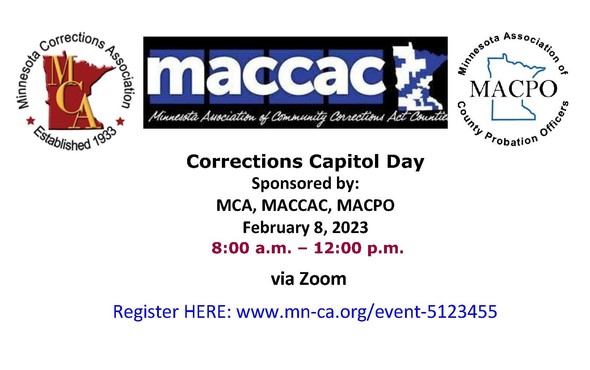

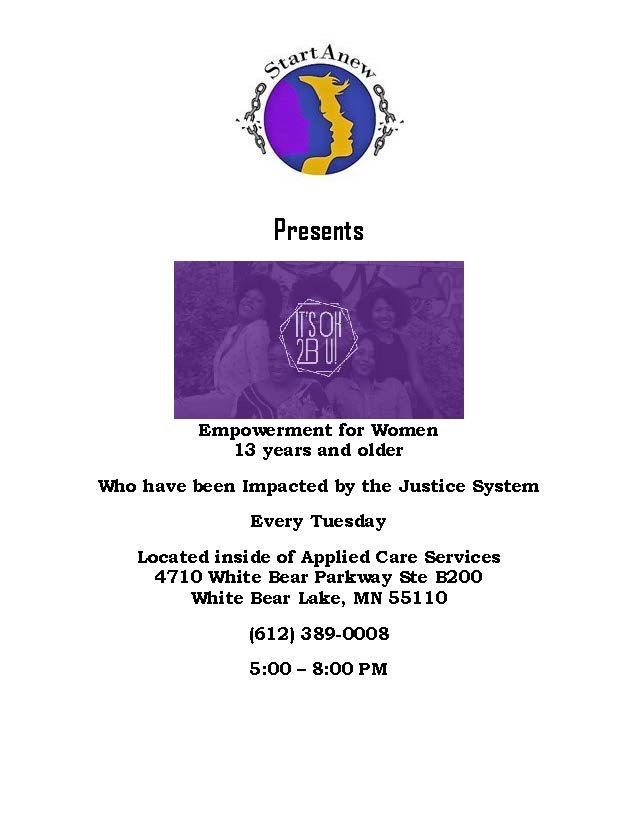
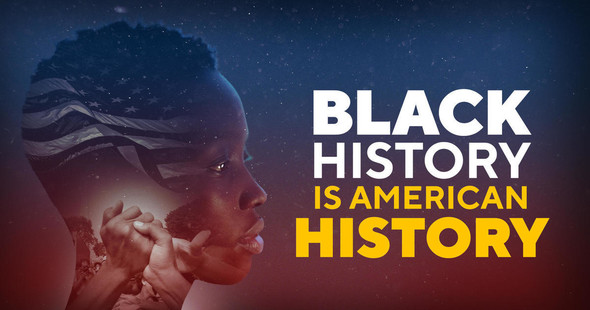
-
-
Embracing and Empowering our Youth
Noon-1 p.m. Thursday, Feb. 9
City of Minneapolis Public Service Building, 505 Fourth Ave. S., Conference Room 100
This is a hybrid event. To watch online, check out the City's YouTube channel.
-
2023 History Makers at Home award ceremony
The Minneapolis Department of Civil Rights is honoring several Black community leaders as part of the History Makers at Home program – a profile series featuring inspirational leaders in a wide range of fields.
11 a.m.-12:30 p.m. programming, 12:30-1:30 p.m. refreshments and networking
Thursday, Feb. 16
Capri Theater, 2027 West Broadway Ave.
This is a hybrid event. To watch online, check out the City's YouTube channel.
-
Rock Your Crown Past Present and Creative
Noon-1 p.m. Thursday, Feb. 23
City of Minneapolis Public Service Building, 505 Fourth Ave. S., Conference Room 100
This is a hybrid event. To watch online, check out the City's YouTube channel.



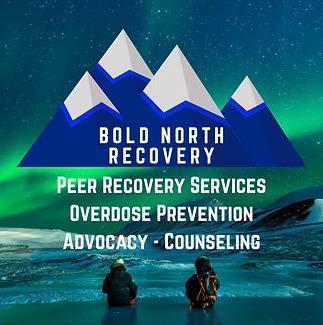 |
|
Recovery Coach Academy
Feb 20-23 8:30-5:00 (RCA Training)
Feb 24-25 8:00-5:00 (Ethics Training)
Eagle's Healing Nest
Sauk Centre, MN 56378
info@boldnorthrecovery.com
|
 |
|
Recovery Coach Academy
March 27-30, 8:30-5:00 (RCA Training)
March 31 - April 1, 8:00-5:00 (Ethics Training)
In-Person Northstar Regional
10990 95th Street NE
Otsego, MN 55362
info@boldnorthrecovery.com
|


DWI Clinic: $125
Total of 6 hours - 3 hours each Monday
6:30 pm to 9:30 pm
Diversion I: $90
Total of 4 hours - 2 hours each Monday
4:00 pm to 6:00 pm
To register for either session or following sessions:
Please call Diane at 320-564-4911 between 8:00 am and 5:30 pm
|











 |
|
Embracing Diversity in Recovery
9 AA Meetings a Week at RCN
Veterans In Recovery
Faith Based Recovery
Many Recovery Events & Options
|

The Minnesota Department of Health (MDH) released the Minnesota Homeless Mortality Report, 2017-2021 on our Center of Excellence on Public Health and Homelessness website. The report, conducted by Dr. Katherine Diaz Vickery and her team at the Health, Homelessness, & Criminal Justice Lab at the Hennepin Healthcare Research Institute (HHRI), combines Minnesota’s Homeless Management Information System data on people who used homeless services from 2017 to 2021 with Minnesota state death data and Minnesota population data from 2017 to 2020 from the U.S. Census American Community Survey. HHRI analyzed the data to compare mortality rates and causes of death for people experiencing homelessness and the general Minnesota population.
- The rate of death is three times higher amohttps://www.health.state.mn.us/communities/homeless/coe/coephhmr.pdfng people who experience homelesshttps://www.health.state.mn.us/communities/homeless/coe/index.htmlness in Minnesota than the general population. Twenty-year-olds experiencing homelessness in Minnesota have the same rate of death as 50-year-olds in the general population.
- Mortality across each racial and ethnic group is higher among people experiencing homelessness than in the general Minnesota population. American Indian people experiencing homelessness have 1.5 times higher rates of death than other people experiencing homelessness and five times higher rates of death than the general Minnesota population.
- Deaths from substance use are 10 times higher among people experiencing homelessness than the general Minnesota population. One in 10 substance use deaths in Minnesota are among people experiencing homelessness and one in three of all deaths among people experiencing homelessness are caused by substance use, especially opioids, including fentanyl.
The report concludes with the recommendation that the Minnesota Interagency Council on Homelessness lead a coordinated, multi-sector response to reduce preventable deaths among people experiencing homelessness. Recommended actions include co-designing and developing cross-sector health and housing programs with people who have experienced homelessness and “elevating housing as a key life-saving strategy to prevent fatal opioid overdoses among people experiencing homelessness.” With support from Governor Walz’s proposed budget, MDH also plans to conduct a follow-up homeless mortality study in 2025 and to increase investment in housing and harm reduction services for people experiencing homelessness to prevent fatal overdoses and drug-related infectious disease.
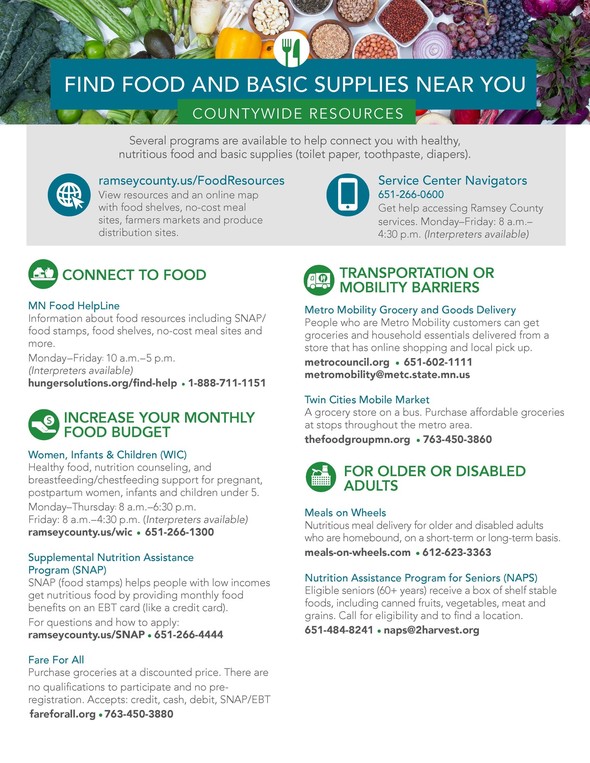
Community Needs Assessment for Family Recovery Support
Please Click Here
Beyond Brink was founded in 2016. The need for a recovery community organization was apparent in the Mankato area, and was personally essential for Brandy Brink (Founder) After experiencing first hand the need for advocacy within the community, an idea was formed and with the help of many supporters in this area, that idea has developed to the organization it is today

On January 24, the Governor and Lieutenant Governor rolled out the entirety of the recommended budget to the legislature. Their budget proposals for the DOC are historic, and these much-needed increases will go a long way toward helping us advance our mission to transform lives. The Governor’s budget recommendations that may be of most interest to the transition coalition are listed below. Each item has a summary followed by details on the proposed budget investments. This is not the entirety of the DOC-related proposals included in the budget recommendations. For full details on the entirety of budget recommendations to the legislature for the DOC, please see this link. It’s important to note, the proposed budget will now be debated in the legislature throughout the remainder of the session. Once final agreements are reached, we will know precisely what DOC recommendations were ultimately funded, and what laws were passed. As the session’s efforts unfold, we will continue to share information, as it becomes known to us.
Operating/Base Budget and Projected Prison Population Costs
The DOC’s budget was reduced by over $21 million when our prison population decreased during the COVID pandemic. In addition, the cost of doing business rises each year, including healthcare contributions, FICA and Medicare, other salary and compensation-related costs, rent, leases, fuel, utilities, IT, and legal services. Despite these increases, we must maintain current levels of service—even as we know our population will continue to increase as court backlogs from COVID begin to resolve.
The Governor and Lieutenant Governor’s budget funds these investments:
- Substantial funding to maintain the current level of staffing and service delivery at our agency
Case Managers
Case Managers are a vital part of our population’s transformational process. They serve as “navigators” by helping those who are incarcerated understand and succeed in the intake and release process, getting them into facility programming, finding them connections to outside services and family, and accessing legal and release planning support.
The Governor and Lieutenant Governor’s budget funds these investments:
- Adding 10-12 Case Managers to existing and proposed areas detailed throughout this document
Community Supervision
Effective community supervision is critical to public safety and can make the difference between someone continuing their transformation in the community or someone committing a new crime and going back to prison. We need to strengthen community supervision systems across the state and support individuals so they can successfully contribute to our communities.
The Governor and Lieutenant Governor’s budget funds these investments:
- A historic increase in funding for ongoing community supervision operations in all three supervision systems and Tribal Governments, including adding agents and other staff positions
- Grant funding for counties and local providers to provide treatment and support
- Additional DOC staff to allocate and monitor these grants
- Increase in pass-through money to counties
- Contracts with Intervention Centers for high-risk and high-need people
Statewide Public Safety Data Infrastructure
To keep Minnesotans safe, we must modernize the technology and information systems in our facilities as well as broaden the scope and purpose of statewide criminal justice information sharing where there are currently gaps. This will allow for a data-driven DOC that connects public safety and community corrections partners acrhttps://mn.gov/mmb-stat/documents/budget/2024-25-biennial-budget-books/governors-recommendations-january/corrections.pdfoss the state.
The Governor and Lieutenant Governor’s budget funds these investments:
- Modernizing the DOC’s public safety data collection systems
- Linking critical system partners together such as law enforcement, the Judicial Branch, and community supervision providers in both addressing crime as well as sharing available services
Minnesota Rehabilitation and Reinvestment Act
Over 95% of those who are incarcerated will eventually go back to their communities. We must ensure that their time in prison provides meaningfully rehabilitation and reduces their risk of reoffending upon release. We need to shift our focus from how much time people spend in prison, to how people spend their time.
The Governor and Lieutenant Governor’s budget supports the Minnesota Rehabilitation and Reinvestment Act including:
- Requiring a comprehensive needs assessment for people with more than 365 days until release and using the assessment to develop an individualized program plan with clearly identified goals for each person
- Allowing for those who actively participate in programming (including treatment, medical and mental health services, educational, career, and other rehabilitative programming) and who meet their individualized goals to be eligible for earned incentive release credit
- Reinvesting savings realized through the reduction of prison time into crime victim services, community supervision, community-based services, and the state’s general fund
Public Safety Through Stable Housing
Public safety depends on stable housing for those released from prison. Of the 95% of incarcerated people who are released from prison, approximately 25% are homeless. We must ensure these individuals have the stability to reintegrate successfully back into our communities and not commit further crime.
The Governor and Lieutenant Governor’s budget funds these investments:
- Funding housing stabilization pre-release services for people exiting prison on Intensive Supervised Release and for analyzing and evaluating data related to the impact of these investments
- Adding two Housing Coordinators, dedicated to reducing homelessness and supporting housing stability
- Funding the DOC Rental Assistance Program
- Funding culturally responsive grants and trauma-informed transitional housing
Successful Reentry
In FY22, we brought 1,283 people on supervision back to prison for a technical violation of their supervision terms (not a new crime). This accounts for 26.4 % of new admissions. These people very often have dependent children and are in vulnerable populations across the state, including a highly disproportionate return rate for those living in poverty, BIPOC and Native American populations, victim/survivors of crime and trauma, and those struggling to overcome substance abuse disorders and mental health illnesses. Successful reentry means less new crime, fewer victims, and avoiding the cost of re-incarceration. The success and safety of the individual, their family, and the public hang in the balance.
The Governor and Lieutenant Governor’s budget funds these investments:
- Adding re-entry release planning case managers
- Funding ongoing health services release planning and case management
- Focusing funding on substance use addictions which includes Narcan kits for all individuals leaving incarceration
- Adding 12 opioid release planners, social workers, and case managers to improve continuity of care upon release
- Adding a Native American culturally specific release program for those releasing to Tribal communities
- Funding operating costs related to supervision
- Adding 7 case management and substance use disorder treatment staff
- Creating a Reentry Peer Support Pilot Project for high-needs/high-barriers people
- Adding 1 resource development position to oversee quality peer support services, coordination of contracts, and accurate service targeting to eligible clients
Evidence Based Practices Unit
To be safe, transparent, and effective, our agency needs to evaluate the effectiveness of all aspects of secure confinement, treatment, programming, and community supervision; maintain research on best practices across the field of corrections; and ensure the State of Minnesota is investing resources, time and energy into the most effective outcomes for the safety of the citizens of Minnesota.
The Governor and Lieutenant Governor’s budget funds these investments:
- Creation of an Evidence Based Practices Unit dedicated to policy, practice, and procedures
- Funding the unit’s needs around data tracking, reports, training, and facilitation
- Funding new and innovative programming to meet criminogenic needs, culturally specific needs, and other responsivity needs such as trauma, homelessness, and gender identity
DOC Transformational Education for Productive and Safe Communities
Education is critical to job attainment and personal transformation and plays a key role in improving public safety. Every day, nearly 600 people in our prisons are on a waiting list to pursue a high school degree, while hundreds of people churn in and out of prison every year with short sentences of less than 6 months. Education funding is critical to reducing criminogenic levels of idleness inside our facilities and to ensuring opportunities for transformational educational programming for every willing participant in our custody.
The Governor and Lieutenant Governor’s budget funds these investments:
- Adding education staff and supportive services including operations support services and case management
- Funding essential IT educational components, expanded vocational training, adding additional physical classroom space, and supporting Pell partnerships with higher-education institutions now operating in DOC facilities
- Expanding work release for education
Connecting Incarcerated Individuals and their Families
Positive connections and relationships with family members are proven to promote rehabilitation and reduce reoffending. A survey showed 16,248 Minnesota children have an incarcerated parent. Seventy-three percent of those incarcerated in Minnesota are parents. Sixty-six percent of incarcerated men have minor children and 56% of those men were living with their children prior to incarceration. Seventy-seven percent of incarcerated women have minor children, and 66% were living with their children prior to incarceration. The majority of these incarcerated men and women will return to living with their kids after incarceration and family supports are vitally needed.
The Governor and Lieutenant Governor’s budget funds these investments:
- Creation of a Family Support Unit with 5 staff focused on strategies, policies, parental education, and community partnerships to support meaningful connections between incarcerated individuals and their families
- Funding to remove cost barriers for incarcerated individuals to make phone and video calls to family members and supportive contacts.
- Creation of family-focused release services to provide an alternative to returning to prison for mothers and fathers with dependent children
Indeterminate Sentence Review Board (ISRB)
Almost 600 people are currently incarcerated for life with the possibility of parole. Under current law, the DOC Commissioner has sole authority and discretion to make release decisions for these individuals, but it’s sound correctional policy to ensure a panel of qualified individuals is making these decisions instead. The ISRB would now consist of a panel including Governor-appointed-recommendations from the majority and minority leaders of the House and Senate, as well as the Commissioner of Corrections who will serve as chair.
The Governor and Lieutenant Governor’s budget funds these investments:
- Creation of an Indeterminate Sentence Review Board
DOC Pathways from Prison to Employment
Data and research over several decades confirm that when people find stable, meaningful employment upon release from prison they are less likely to reoffend and return to prison. We must use the expertise of those within our agency and strengthen community partnerships across the state.
The Governor and Lieutenant Governor’s budget funds these investments:
- Creating an Economic Opportunity and Public Safety Unit comprised of multiple agencies and including 5 staff who will develop and strengthen relationships in the community and between the state and employers
- Expanding the DOC EMPLOY Program including adding 11 additional staff
- Funding community-based contracted programming and services for pre- and post-release employment and vocational services
Sex Offense Treatment
Studies have repeatedly found treatment of individuals who commit sex offenses has a considerable impact on lowering both sexual and general recidivism rates. Community sex offender treatment is fundamental and is much more cost-effective than prison treatment programs.
The Governor and Lieutenant Governor’s budget funds these investments:
- Adding funding for the extremely underfunded Community Sex Offender Treatment grant program
- Funding administrative costs including one staff in the DOC Grants and Subsidies Unit
- Adding a staff position to pilot and collect needed data on the Alpha/Emergence Intensive Outpatient Sex Offender Treatment Program
- Increasing community residential sex offender treatment by five beds.
- Hiring one staff position to expand sex offense specific training for all agents (supervised release, probation, and juvenile)
|